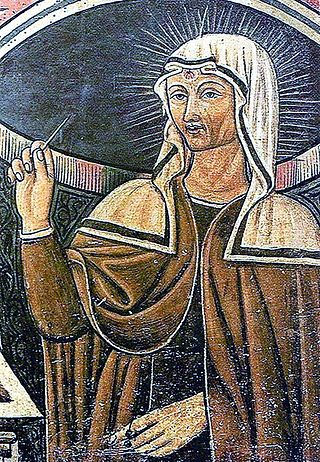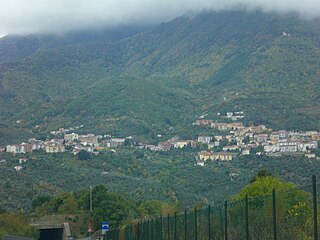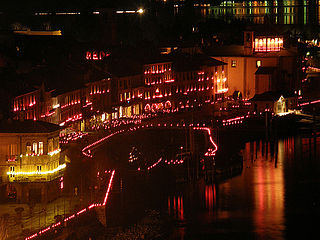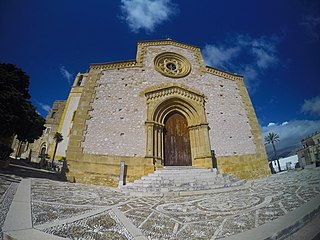Little Italy, Connellsville is an area on the west side of Connellsville, in Fayette County, Pennsylvania.
Little Italy, Connellsville is an area on the west side of Connellsville, in Fayette County, Pennsylvania.
Between 1880 and 1930, a flood of immigrants from Italy and many other European countries arrived in Connellsville, Pennsylvania, and its vicinity, primarily to work in the coal, coke, steel, and locomotive industries. Many of the Italian immigrants, mainly from the regions of Campania (cities of Naples and Avellino), Abruzzo, Basilicata, Calabria and Sicily, settled in the neighborhoods of the west side of what is now known as the city of Connellsville. Originally, the part of Connellsville west of the Youghiogheny River was incorporated as the borough of New Haven, but by a charter of 1909, New Haven was annexed by the city of Connellsville. The neighborhood, formerly known as "New Haven Hill," and now as "West Side Hill," was heavily populated by Italian immigrants, and their Italian-American descendants. Because of this, the area has earned the title "Little Italy." In the Roman Catholic tradition, the neighborhood has a patron saint, that being Saint Rita of Cascia (IT:Santa Rita da Cascia).
Little Italy in Connellsville is formally bounded by West Crawford Avenue to the south, Maple Street to the north, North 12th Street to the west, and West Crawford Avenue (which makes a 90-degree angle) to the south, though the Italian-American population has always had a strong presence beyond the formal boundaries, including Brookvale, Trotter, Hickory Bottom, Robinson Falls, Limestone Hill, and the lower West Side, where one of the most central places of the Italian-American culture in Connellsville is situated: Saint Rita of Cascia Roman Catholic Church (La Chiesa Cattolica Romana di Santa Rita da Cascia), located at the merging of South 2nd Street and South 1st Street.
Note: There is also a strong Italian-American presence in the city's Association Grounds and North End neighborhoods, on the east side of the Youghiogheny River.
Each year on the weekend prior to the Feast of Our Lady of Mount Carmel (La Beata Vergine di Monte Carmelo), the church hosts its annual Italian festival, known famously throughout the city as "Saint Rita's Street Fair." There, you will find traditional Italian delicacies, such as cavatelli, manicotti, pasta fagioli, sausage and peppers, pizza, and fried dough (zeppole), as well as other festivities, such as games of chance, bingo, a large 50/50 drawing, and traditional Italian and Italian-American music. Thousands of people from all over come each year to enjoy the festivities.
Every year in July, Little Italy on West Side Hill in Connellsville, is the scene of a large festival to celebrate the Italian American heritage, known as the "Annual West Side Hill Italian Bash." The celebration is held on Banning Avenue, between North 11th Street and North 10th Street. Highlights include a flag raising and singing of the Italian National Anthem, Il Canto degli Italiani, commonly known as "Inno di Mameli," to signify the commencement of the festival, traditional Italian food, wine sampling, selections by the Molinaro Band (formerly the Royal Italian Band), a 50/50 drawing, traditional Italian music, a prize raffle, and a display of fireworks, to signify the end of the celebration.
Similar festivals are also celebrated on popular Italian Feast Days, such as the Feast of Saint Rita of Cascia (La Festa di Santa Rita da Cascia), which is held on May 22, the Feast of Saint Anthony of Padua (La Festa di Sant'Antonio di Padova), which is celebrated on June 13, and the Feast of Our Lady of the Hill (La Santissima Madonna del Colle)*, which coincides with the Feast of Our Lady of Sorrows (La Santissima Madonna Addolorata), and is celebrated on September 15.
The Feast of Saint John the Baptist (La Festa di San Giovanni Battista), which is celebrated on June 24, the Feast of Saint Rocco (La Festa di San Rocco), which is celebrated on August 16, and the Feast of Saint Amato (La Festa di Sant'Amato), which is held on September 30, are also popular amongst the Italian-Americans of Connellsville, especially amongst those whose ancestors originated in the Avellino province of Italy.

Rita of Cascia, OSA, was an Italian widow and Augustinian nun. After Rita's husband died, she joined a small community of nuns, who later became Augustinians, where she was known both for practicing mortification of the flesh and for the efficacy of her prayers. Various miracles are attributed to her intercession, and she is often portrayed with a bleeding wound on her forehead, which is understood to indicate a partial stigmata.

Our Lady of Sorrows, Our Lady of Dolours, the Sorrowful Mother or Mother of Sorrows, and Our Lady of Piety, Our Lady of the Seven Sorrows or Our Lady of the Seven Dolours are names by which Mary, mother of Jesus, is referred to in relation to sorrows in life. As Mater Dolorosa, it is also a key subject for Marian art in the Catholic Church.

The Feast of San Gennaro, also known as San Gennaro Festival, is a Neapolitan and Italian-American patronal festival dedicated to Saint Januarius, patron saint of Naples and Little Italy, New York.

Pacentro is a comune of 1,279 inhabitants of the province of L'Aquila in Abruzzo, Italy. It is a well-preserved historic medieval village located in central Italy, several kilometers from the City of Sulmona about 170 kilometres (110 mi) east of Rome. It is one of I Borghi più belli d'Italia.

Calabritto is an Italian town and a commune in the province of Avellino, Campania, Italy. It occupies a hilly-mountainous area at the eastern tip of the Monti Picentini range, in the upper Sele valley.

Potenza Picena is a comune (municipality) in central Italy, situated in the Province of Macerata, in the Marche region. It has 15503 residents.
Paloma is a Spanish female given name, derived from Latin "palumbus", which means "dove", a symbol of peace. The name also can be understood as the Holy Spirit symbolized in this bird. Palomma, using double "m", comes from a Neapolitan dialect, made famous in the song "Palomma 'e notte" written by Di Giacomo and Buongiovanni in 1906.

Our Lady of Graces or Saint Mary of Graces is a devotion to the Virgin Mary in the Roman Catholic Church. Several churches with this dedication often owe their foundation to thankfulness for graces received from the Virgin Mary, and are particularly numerous in Italy, India, Australia, United States, Portugal, France and the Italian-speaking region of Switzerland. Also it is related to the Marian apparitions in which was revealed the Miraculous Medal, also known as the Medal of Our Lady of Graces.

Montisi is an Italian village in the municipality of Montalcino, Province of Siena, Tuscany. It sits on a hill on the boundary between the Val d'Orcia and the Crete Senesi.

Traditions of Italy are sets of traditions, beliefs, values, and customs that belongs within the culture of Italian people. These traditions have influenced life in Italy for centuries, and are still practiced in modern times. Italian traditions are directly connected to Italy's ancestors, which says even more about Italian history.

Maria Santissima dell'Udienza or Madona dell'Udienza or Our Lady of the Audience is a marble sculpture created by the Renaissance sculptor Antonello Gagini, in the early 1500s. The statue is currently housed in the apse of the Sanctuary of Our Lady of the Audience in Sambuca di Sicilia, Italy.

The Sanctuary of Madonna dei Miracoli is a church in Alcamo, province of Trapani, Sicily, southern Italy; it is dedicated to the Madonna of the Miracles.

Our Lady of Miracles is the patron saint of the town of Alcamo.

The Holy Piety feast is a catholic feast celebrated on 7 January evening in Cannobio.

The Sanctuary of the Most Holy Mary of the Height is a place of Marian devotion, located on the top of Mount Bonifato, in Alcamo in the province of Trapani, Italy.

The cult of Maria Santissima della Confusione began in the province of Trapani, and eventually spread in the near province of Palermo.

The Sanctuary of Maria Santissima di Custonaci is a Catholic Church located in the town centre of Custonaci dedicated to Mary. Madonna of Custonaci is the patroness and guardian of the communes of agro Erice.

Madonna di Pietraquaria is one of the titles by which the Holy Virgin Mary is venerated as the Patroness of the city of Avezzano, in Abruzzo, Italy. On 1 January 1978, Maria Santissima di Pietraquaria was proclaimed the patroness saint of the city of Avezzano. The Virgin Mary is celebrated with events and religious rites between 25 and 27 April.

The sanctuary of Madonna del Ponte is located on the SP 63, in the territory of Partinico (Palermo), 3 or 4 km from the junction of Balestrate of the A29 motorway.